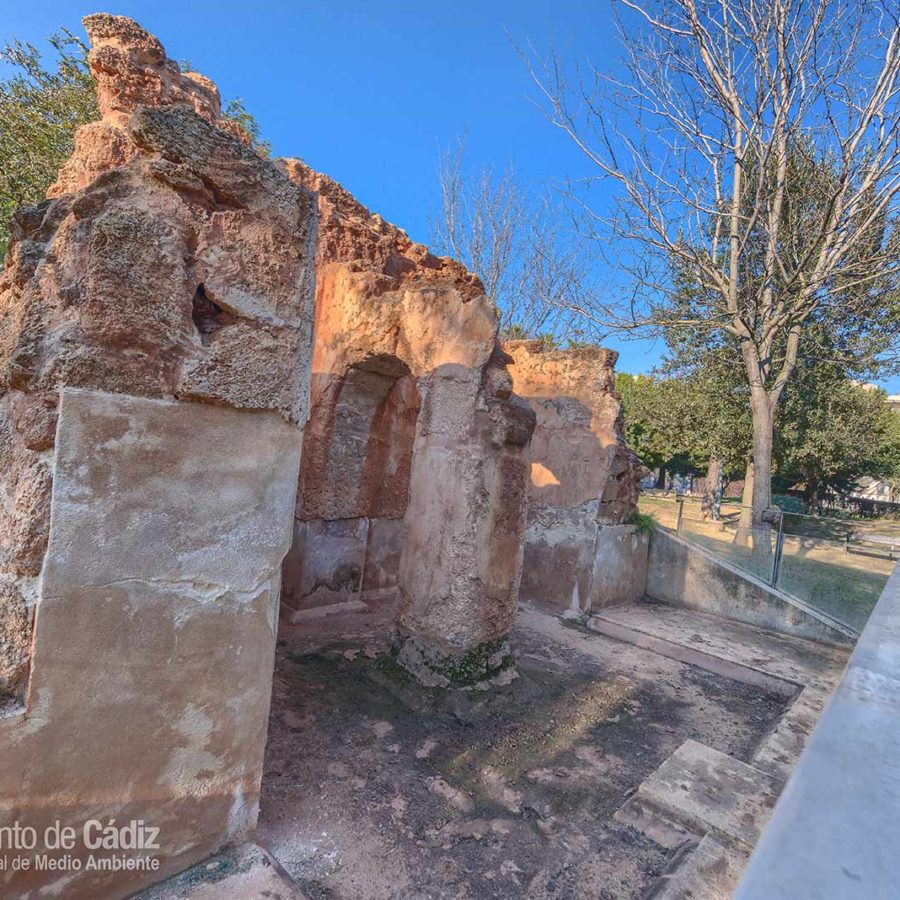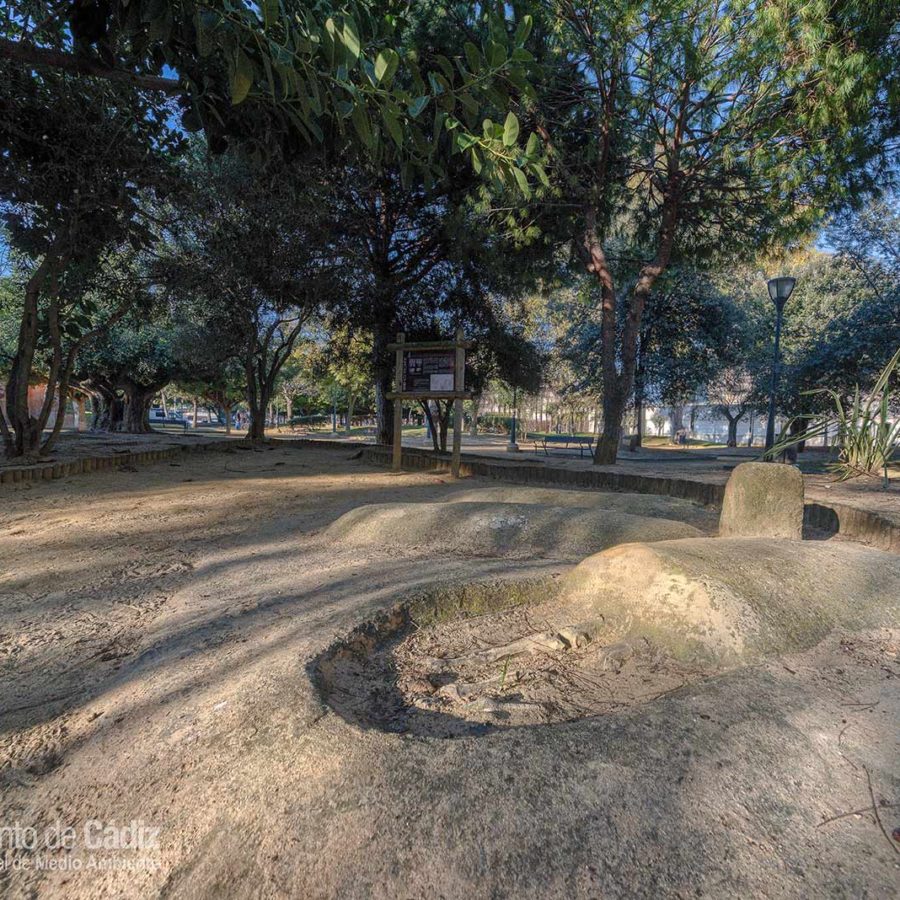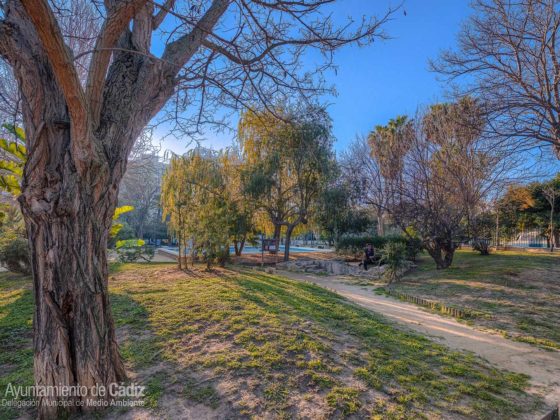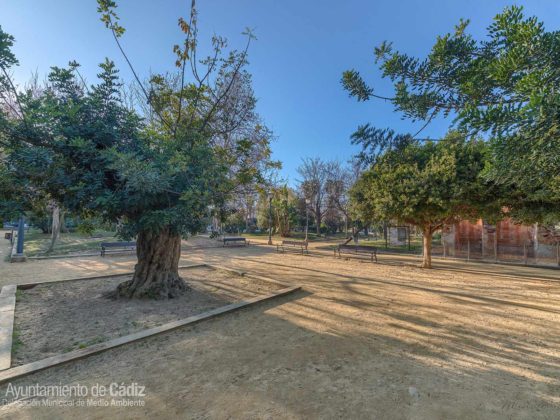The Phoenician Gadeiras consisted of three islands: Erytheia and Kotinoussa, separated by the Canal Bahía-Caleta and Antípolis.
The Park
Botanical species
The Park
The park opened in 2003, with an area of 9985 m². It owes its name to the Phoenician name, which one of the three islands that make up the so-called Archipelago of the Phoenician Gadeiras: Erytheia, Kotinoussa and Antípolis (Isla de León). Above the Canal Bahía-Caleta that crossed the current old town of Cadiz, Erytheia was the island that was located to the north. From the current San Sebastian Castle to the Island of Sancti Petri was the Kotinoussa Island.
This park rises on land of the old Military Barracks of Varela, and in what in its time were the Phoenician, Punic and Roman necropolises. Taking this historical background into account, this green area contains an added attraction consisting of the cultural and didactic exhibition of different archaeological pieces that arose after the excavations for the construction works of the San José car park and the dwellings of San Arcángel Miguel street. It has an objective of remembering and divulging the historical importance of the Cadiz necropolis. In this way, it is configured as an archaeological park where there is a historical journey through the funerary art of the first civilisations that inhabited Cadiz.
In addition, the design of the park presents meandering routes that invite people to both walk and rest.
Botanical species
The most important botanical species that make up the Park are:
|
Araucaria araucana Brachychiton populneus Celtis australis Ceratonia siliqua Cercis siliquastrum Citrus aurantium Chamaerops humilis Cupressus sempervirens Dracaena draco |
|
Eucalyptus camaldulensis Ficus nítida Jacaranda mimosifolia Juniperus spp Lagunaria patersonii Laurus nobilis Magnolia grandiflora Melia azedarach Musa japónica |
|
Olea europea Phoenix canariensis Phoenix dactylifera Pinus halepensis Pinus pinea Pistacia terebinthus Platanus x hybrida Populus x canadensis Prunus cerasifera pisardii |
|
Quercus suber Robinia pseudoacacia Salix babylonica Salix fragilis Scirpus holoschoenus Sophora japonica Trachycarpus fortunei Ulmus pumila Washingtonia robusta |





































